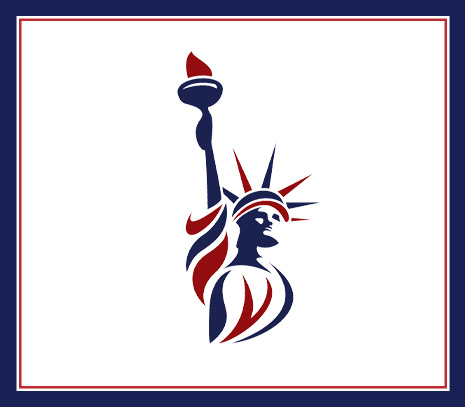
The Preference System to Immigrate to the U.S. in Charleston, SC
Each fiscal year beginning October 1st the U.S. system of immigration has a limited number of immigrant visas available for foreign immigrants. The system is essentially designed to allow family members, of people who are already in the U.S. and the most talented, smartest, or uniquely qualified of all others to live here. The philosophy is designed to help our citizens & green card holders, while attempting to strengthen our work force with the smartest, most accomplished and most talented. About 140,000 of them are employment based with approximately 40,000 being allocated to each of the first 3 employment preferences and 10,000 each to preferences 4 and 5. This is how "world class athletes and rock stars" get into the U.S.
In practice, the system assigns each country a different quota on the number of foreigners allowed in from that country. Each country is allowed only a maximum of 7% of its combined family based and employment preference based visas per year and 2% for their family members. More apply so backlogs occur. This practice is similar to the one imposed by most countries in the world. In administrating this system the USCIS utilizes a preference system designed to give priorities to "closer family members" and "more highly educated and skilled individuals" brought here by their employers. For employment purposes the system is divided into 5 preference categories. These are EB-1 through EB-5 visas.
All categories of employment based visas are issued in the chronological order in which the petitions were filed until the annual numerical limit for each category is reached. the filing date becomes the applicants priority date for visa issuance. Immigrant visas cannot be issued until an applicant priority date is reached.
Waiting Time Periods
Generally, after an immigration petition is approved the immigrant must then wait for the availability of an assigned visa to proceed with entry. The EB-2 and EB-3 preference or category wait the longest. In some instances waits have been up to 10 years or longer! Countries like China, India & Mexico and the Philippines have the longest while Australia, Canada & United Kingdom the shortest. For the first employment preference all visa issuance dates are current. For the second employment preference visa issuance dates for mainland China and India are backlogged to 2007 and 2004 respectively. For the third employment preference all visa issuance dates are backlogged, some as far back as 2002 for India. for the fourth employment preference all visa issuance dates are current. And for the fifth employment preference all visa issuance dates are current.
It appears that the system favors those immigrants from the United kingdom of which the U.S. originated, then those from northern Europe who helped to first populate the U.S., then those from southern Europe and so for and so on with third world countries having the lowest quotas.
Preference Exception
There is a big exception to the preference and quota system. Immediate relatives of U.S. citizens which includes parents, spouse and children under the age of 21, in most cases have no waiting period. An immigrant visa is immediately available. This is one reason why we strongly recommend that permanent resident (green card holders) get their US citizenship as soon as they are eligible. The other reason is that possible deportation for the commission of serious crimes is much less likely once citizenship is obtained.
Family Based Preferences
First Preference: Unmarried adult children (including adopted children) of U.S. citizens over the age of 21.
Second Preference: Spouses of permanent residents (green card holders) and their children regardless of their ages.
Third Preference: Married children of U.S. citizens, their spouses and their minor children.
Fourth Preference: Brothers and sisters of adult U.S. citizens, their spouses and minor children.
All other relatives such as grandparents, cousins, aunts, uncles, etc. do not enjoy any family based preferences.
Employment Based Preferences
First Preference (EB-1 VISA): Priority workers including aliens with extraordinary abilities, outstanding professors and researchers and certain multinational executives & managers. Certain "special programs" are contained within this preference.
Second Preference (EB-2 VISA): Members of Professions holding advanced degrees or persons of exceptional ability.
Third Preference (EB-3 VISA): Skilled workers, professionals and other qualified workers.
Fourth Preference (EB-4 VISA): Special immigrants and those in religious vocations.
Fifth Preference (EB-5 VISA): Immigrant investors creating employment for U.S. workers in the U.S.
All other unskilled workers enjoy no employment preference and often have to wait 10 years or longer for a employment visa.
Usually, understanding and applying this preference system requires the help of an attorney and we can provide such help. Also, sometimes interim alternative temporary visas are advisable to lessen the inconvenience of the waiting periods.

Reasons Why Our Clients Work With Us
-
Over 3 Decades of Immigration Experience
We have been in practice since 1982, and have helped thousands of clients from almost every country in the world with their immigration needs.
-
Accessible Office & Home Appointments
We make the process convenient and feasible for our clients. We offer flexible appointment hours including weekends, and monitor our phones 24/7 to ensure we are here to answer all of your questions.
-
Simple & Uncomplicated Payment PlansWe save you the guess work with straightforward payment plans. You will always know the exact amount of your immigration services.
-
Military Discounts
We have a deep appreciation for our active Army, Navy, Marine, Air Force and Coast Guard Members and offer discounts on attorney fees.



-
 DACADeferred Action for Childhood Arrivals
DACADeferred Action for Childhood Arrivals -
 Immigration Reform Legislation
Immigration Reform Legislation -
 Qualifying for a Visa
Qualifying for a Visa


